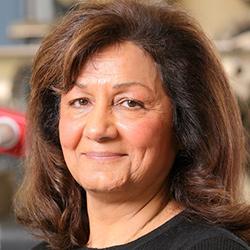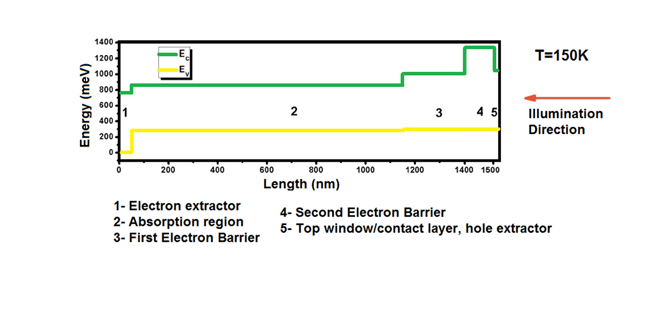Razeghi and Her Team Develop New Vis/e-SWIR Camera
The new camera’s applications span from military to environmental and medical using a Quantum-engineering approach
A research team at Northwestern’s Center for Quantum Devices (CQD) has developed a new approach in Quantum device design to realize a visible/extended short–wavelength infrared (Vis/e-SWIR) camera with a Quantum-engineered photo generated carrier extractor.
 Vis/e-SWIR imaging is a nondestructive optical analysis technique that can be used to obtain information that would otherwise be unavailable with conventional visible light imaging alone. The technique offers several applications spanning from space, military to environmental and medical.
Vis/e-SWIR imaging is a nondestructive optical analysis technique that can be used to obtain information that would otherwise be unavailable with conventional visible light imaging alone. The technique offers several applications spanning from space, military to environmental and medical.
Northwestern Engineering’s Manijeh Razeghi, Walter P. Murphy Professor of Electrical and Computer Engineering, and her team at CQD demonstrated for the first-time a newly developed InAs/AlSb/GaSb type–II superlattice-based (T2SLs) Quantum-engineered photogenerated carrier extractor. This novel Quantum structure is advantageous as it significantly improves camera sensitivity over the state of the art. The results were published March 21 in Nature Scientific Reports.
“We showed the capability of a type-II super lattice-based Quantum device to cover SWIR, e-SWIR and visible spectrum imaging, using a very well designed Quantum-engineering approach,” said Razeghi, who led the research. “I am fascinated with this result.”
This same capability for extended spectral imaging can also be used by NASA for planetary sciences to study the atmospheres and surfaces of Earth and other nearby planetary bodies. Images in the e-SWIR spectrum are used in many satellites for remote sensing applications, and the spectrum is known for its sensitivity to moisture, which offers vital measures in remote sensing applications, such as leaf water content, plant water stress, the remote sensing of vegetation liquid water, and forest fire burn severity.
The unique design architecture has made it possible for T2SL-based e-SWIR imaging to operate with lower power and cover the visible light spectrum. This new research builds on CQD’s work developing an understanding of the physics of new Quantum semiconductor crystals for novel applications and realizing advanced semiconductor Quantum devices such as lasers, photodetectors, transistors, waveguides, and switches.
“The successful demonstration of this novel Quantum design can open up an excellent alternative to be used for high-performance room-temperature imaging systems," Razeghi said.
This progress makes T2SL an excellent candidate for current state-of-the-art visible-infrared detection and imaging technologies. Images taken by Vis/e-SWIR light can offer the interchange between the reflections of visible light, which may be invisible for human eyes. It could also be an opening for a new domain of special effects or surrealistic colors in variety of materials.
The research was supported by the Defense Advanced Research Projects Agency (DARPA), US Army Research Laboratory, US Air Force, and NASA.

